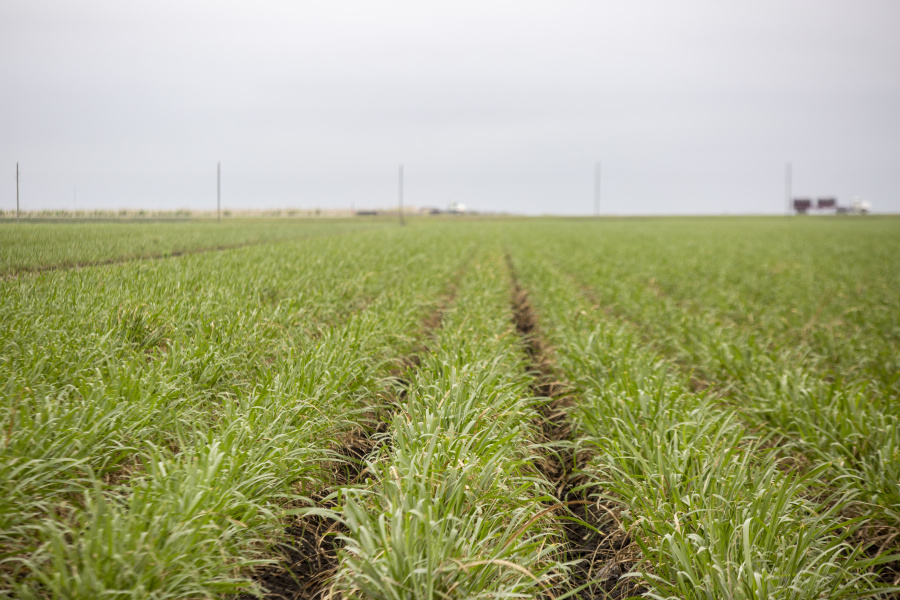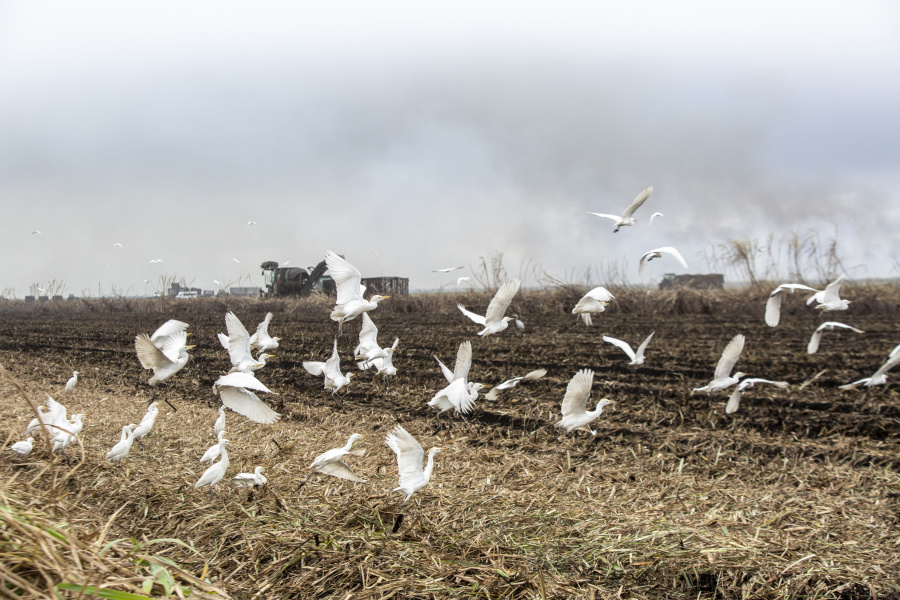
The sweet spot for Florida sugarcane farmers balances sustainability with profitability, and the state’s mandatory Best Management Practices (BMPs) help them achieve those goals.
Implemented the year after the 1994 Everglades Forever Act was passed and enhanced by the 2020 Clean Waterways Act, BMPs offer a three-pronged approach focusing on soil nutrient management, water management and sediment control. For the Everglades sugarcane farmers, that means maintaining the health and regulating the water content of their muck soil – soil at the bottom of a water body with a large amount of organic matter from plant and animal residues, often found in swamp areas.
“Farmers were the first environmentalists. We know if we’re not taking care of the land, it’s not going to take care of us,” says Keith Wedgworth, vice president of Wedgworth Farms.
Sugarcane means big business. Florida produces approximately 11.6 million tons of sugarcane annually. At 50 tons per acre, the multigenerational Wedgworth Farms adds 400,000 tons to the statewide total.
A perennial, sugarcane’s first harvest happens about 18 months after planting, and re-harvesting continues for three more seasons, so it disturbs the soil less than annual crops.
“Sugarcane crops themselves contribute to sustainability,” says Samira Daroub, director of the University of Florida’s Everglades Research and Education Center.
Sugarcane shades the soil, helping to keep it cooler, retain moisture, reduce soil oxidation and nutrient leaching, and grow efficient root systems helping with photosynthesis – meaning it requires less fertilizer than other crops.
Soil Nutrient Science

Science is a large part of sustainability as well as a family value at Wedgworth Farms. Wedgworth’s great-grandfather Herman, the first plant pathologist at the University of Florida’s Everglades Experiment Station, understood fertilizer’s importance. When he started farming, he made his own, other farmers began asking to buy it, and the Big W Brand Fertilizer was born.
“Fertilizer used to provide only major nutrients like nitrogen, phosphorus and potassium, but Herman started adding the minor elements Everglades farmers needed to grow successful crops,” Wedgworth says.
Today, Wedgworth Inc. still produces the Big W brand – but it’s not his great-grandfather’s fertilizer. Now, the company provides custom blends based on specific needs revealed by soil tests.
Nael El-Hout, director of agronomic services for Wedgworth Inc., says he expects fertilizer innovation to continue.
“Fertilizers are being developed today using small particle technology, and this nanotechnology will make nutrient delivery even more efficient,” he says.
Controlled-release fertilizers of polymer-coated urea, potash and other essential nutrients are already reducing the amount and number of times fertilizer must be applied.
See more: Farm Facts: Florida Sugar Cane
Water Quality Focus

Roth Farms is another multigenerational farm in the Everglades that contributes 105,000 tons to the state’s annual sugarcane yield. Vice President Ryan Roth says he’s hopeful about a trial run of a microbe-based product.
“There’s a misconception that farmers overuse chemicals like pesticides, herbicides and fertilizers, but those are among our most costly inputs,” Roth says. “Overuse cuts into a farmer’s profit margin. If I can produce my sugarcane or any crop more cheaply and have the same quality, I’m doing that.”
Water quality impacts the health of the soil, especially in the Everglades. Drier soil also loses more nitrogen than wet soil.
“Soil health is a major priority at Roth Farms,” Roth says. “Land leveling and crop rotations help minimize runoff. A rotation of rice helps keep the soil moist, and rice and corn hulls provide a replacement soil medium.”
BMPs establish minimum rain requirements before water may be pumped from fields, but Roth says his fields often exceed those rainfall requirements before they’re pumped.
“We don’t aggressively pump our fields, even our vegetable crops. We do more wet farming than is required,” he says.
See more: Everglades Agricultural Area Prioritizes Water Quality
Sustainable Practices

Bagasse – the remaining stalks and leaves after the sugar syrup is squeezed out – is a byproduct of sugarcane processing. Some farms with their own mills use it to operate boilers.
“It goes back into the sugarcane processing instead of becoming a waste product,” Wedgworth says. “Another thing we’re doing now is producing the Tellus line of sustainable to-go containers that break down naturally within 90 days.”
El-Hout adds, “Bagasse can also be used to generate electricity, and the mill mud – the plant and soil residues left after processing – can be collected and reapplied to the soil as a natural fertilizer.”
Although each farmer’s management plan varies by implementation, BMPs are an everyday part of farming.
What’s unusual, Daroub says, is that farmers pay a self-imposed tax of $5 per acre to fund research, cost-share programs and other related activities.
“The success of the program here is because of the partnerships and cooperation among Everglades Agricultural Area farmers, South Florida Water Management District and the university,” she says.
Wedgworth and other sugarcane farmers, like Roth, who prioritize environmental stewardship alongside profits, search for ways to achieve better yields and quality without burdening the land or their resources.
“We’re continually looking for innovations in science and technology,” Wedgworth says.
See more: Why Florida Is a Tropical Fruit Paradise









Is there anyone who exports sugar to Mexico that I can talk to, please?